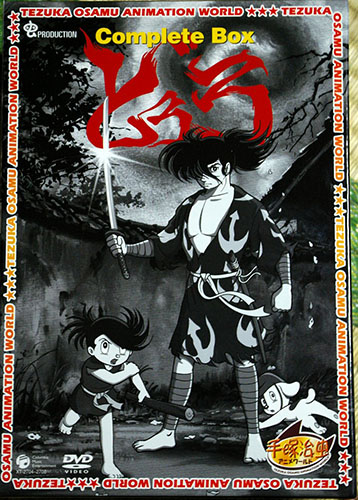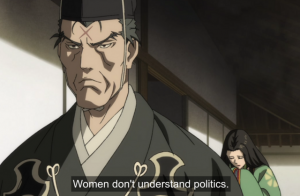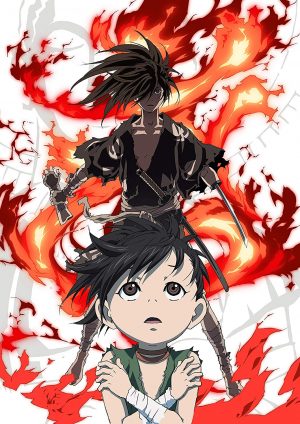
Based on the manga by Osamu Tezuka, Dororo is the story of how Hyakkimaru, a teenage warrior born without much of a body, has to defeat demons in order to regain it (let’s say he has some swords hidden in his prosthetic arms). Along the way, he meets an orphan named Dororo, who accompanies him on his journey. In 1969, its first anime debuted. Then 50 years later, a new anime premiered. So, how do they compare? Read today’s Then Vs. Now to find out!
Story
The basis of the stories are more or less the same, but the executions are where they start to differ. From the very beginning, Hyakkimaru in the 1969 version is capable of coherently conversing. However, in the 2019 version, he isn’t capable of hearing or speaking until past episode 5. As a result, what he gains after defeating each demon differs between both versions. For example, when he fights the demon sword in the 1969 version, he regains the use of one eye, but in the 2019 version, he regains a leg. But due to Hyakkimaru’s inability to communicate in the beginning, it largely changes how his relationship with Dororo is exhibited. Since he is capable of speech in the 1969 version from the very beginning, he is very strict and straightforward with Dororo as his companion, but in the 2019 version, he can’t really react to Dororo’s mannerisms but does show that he cares for Dororo when it counts the most.
While a lot can qualify as its own exclusive article, one significant difference in both versions is how Hyakkimaru meets Mio, and a group of orphans that she cares for. In the 1969 version, his encounter with Mio and the orphans is narrated as a flashback, so it takes place before the series. After Hyakkimaru starts his journey to slay demons to regain his body, he meets a visually impaired monk who takes him to a temple of disabled orphans to show him that other people have it rough in life, but they’re still doing what they can to live. There he meets Mio, their caretaker, and he even falls in love with her. Unfortunately, the children and Mio were killed while he was out, and the temple was burned down by samurai who wanted to take the land. Engulfed by rage, Hyakkimaru slaughters every last of those samurai thugs.
Though this part of the story does happen in the 2019 version, it takes place in the present after he meets Dororo, and not before. Though he does meet the visually impaired monk at the village (in the 2019 version, they first meet when Hyakkimaru and Dororo face the Lady Bandai monster), it results in the circumstances to why Hyakkimaru comes to the temple. In the 2019 version, Hyakkimaru and Dororo weren’t guided there for enlightenment, they just stumbled upon there as a random stop since Hyakkimaru was running a high fever. While Mio does still care for the children, what she does to make money is entirely original to the 2019 version by prostituting herself to local samurai, and her job is what ultimately leads to her and the children getting killed, as opposed to the samurai just wanting to evict them. Hyakkimaru once again does kill most of the samurai in a fit of rage, but before he can kill their leader, Dororo actually stops him just so he won’t give into hate. As he embraces Mio, he cries her name, which becomes his first word.
Art and Animation
One obvious difference is that the 1969 version is in black and white, and the 2019 one is in color. Though a pilot for the 1969 was produced in color, due to budget reasons, it became black and white instead. The original 1969 version emulates the style of Tezuka that has more of a “childish” look, but contained graphic violence, and such violence is retained in the 2019 version. The character designs of the 2019 version also appropriately give a more mature feel to reflect the dark nature of this series, but for those familiar with the original work, it does allow fans to recognize the characters.
The 2019 version excellently does a great job of showing how Hyakkimaru is initially composed of prosthetics and as he gains his face, the design excellently showcases that he’s supposed to be a teenager, while the original version makes him look older and muscular (he’s 16). The rest of the cast are more or less in tune with the original series but are given an edgier look to make it more mature. And the design of Dororo in the newer version does a greater job of showcasing the character’s true identity (a spoiler we don’t wish to share).
Sound
When it comes to the music, the 1969 version organically uses traditional Japanese acoustics such as the shamisen to appropriately set the mood. Its opening theme also has a feel that is in tune with its atmosphere as well. For the 2019 version, it uses a generic rock song as its opening and though it does use traces of traditional acoustics and percussions for BGM, it doesn’t feel as organic as the 1969 version.
The voice acting is, of course, a matter of opinion. The late Nachi Nozawa, the voice of Hyakkimaru, is a big name to old school fans. He was Cobra in Cobra the Animation and Munakata Jin in Ace wo Nerae. For his time, he appropriately brings a sense of seriousness, darkness, and old school masculinity while his 2019 seiyuu, Hiroki Suzuki, brings a sense of youth and innocence to the character as he begins to speak.
Final Thoughts

There is so much we can share, but that could be a series of its own. For now, we can only conclude this article by strongly recommending you to watch both versions and see how anime as a whole has changed these past 50 years.
Recommended Post
6 Anime Like Dororo [Recommendations]
Recommended Post
Top 5 Dororo Characters
Recommended Post
Top 5 Dororo 1st Cours Scenes
Recommended Post





